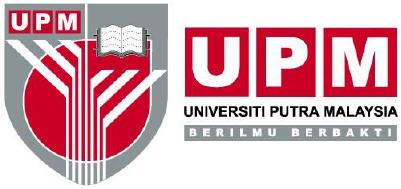
FACULTY OF COMPUTER SCIENCE AND INFORMATION TECHNOLOGY
UNIVERSITI PUTRA MALAYSIA
INDUSTRIAL TRAINING GUIDE
3
rd
Edition (2018)
Assoc. Prof. Dr. Nor Fazlida Mohd Sani
Assoc. Prof. Dr. Marzanah Binti A. Jabar
Assoc. Prof. Dr. Muhamad Taufik Abdullah
Dr. Nor Asilah Wati Abdul Hamid
Dr. Siti Nurulain Mohd Rum
Dr. Salfarina Abdullah
Dr. Alfian Abdul Halin
Dr. Kweh Yeah Lun
Dr. Iskandar Ishak
Puan Sazlinah Hasan
1
Table of Contents Page
1.0 INTRODUCTION .......................................................................................................... 2
2.0 INDUSTRIAL TRAINING ............................................................................................ 2
2.1 Bachelor of Computer Science (Computer Systems) ....................................... 2
2.2 Bachelor of Computer Science (Multimedia)................................................... 2
2.3 Bachelor of Computer Science (Computer Network) ...................................... 2
2.4 Bachelor of Software Engineering ................................................................... 2
3.0 INDUSTRIAL TRAINING OBJECTIVE ..................................................................... 3
4.0 INDUSTRIAL TRAINING PROCESS ......................................................................... 4
4.1 Initial Preparations ........................................................................................... 4
4.2 Final Preparations ............................................................................................. 5
4.3 Industrial Training Implementation .................................................................. 5
5.0 GENERAL RULES ........................................................................................................ 5
6.0 ROLES AND RESPONSIBILITIES ............................................................................. 6
6.1 Role Of Student ............................................................................................... 6
6.2 Role Of Visiting Lecturer ................................................................................ 7
6.3 Role Of Industrial Training And Career Unit ................................................. 8
6.4 Role Of Industrial Training Company/Organization ...................................... 8
7.0 EVALUATION .............................................................................................................. 7
7.1 Evaluation by the Visiting Lecturer ................................................................. 8
7.2 Industrial Supervisor Report ........................................................................ 9
7.3 Student Industrial Training Final Report .......................................................... 9
8.0 STUDENT’S FINAL REPORT ..................................................................................... 9
8.1 Content ............................................................................................................. 9
8.2 The Report ...................................................................................................... 10
9.0 ALLOWANCE ............................................................................................................. 10
10.0 APPENDICES .............................................................................................................. 10
Appendix 1 ...................................................................................................................................
VISITING LECTURER RUBRIC .............................................................................................
Appendix 2 ...................................................................................................................................
INDUSTRIAL SUPERVISOR RUBRIC
2
1.0 INTRODUCTION
The Faculty of Computer Science and Information Technology was
established on October 1, 1998 with four departments namely the Department
of Computer Science, Department of Multimedia, Department of
Communication Technology and Network, and Department of Sofware
Engineering and Information Systems.
Each department offers the following programmes, respectively:
• Bachelor of Computer Science (Computer Systems)
• Bachelor of Computer Science (Multimedia)
• Bachelor of Computer Science (Computer Network)
• Bachelor of Software Engineering
The Industrial Training and Career Unit was established on July 28, 2009 for
handling the Industrial Training management and operation at the faculty level.
2.0 INDUSTRIAL TRAINING
It is compulsory for students to undergo the Industrial Training course for a
duration of 24 weeks at any suitable organization relevant to the discipline of
Computer Science and/or Information and Communication Technology.
It is also compulsory for students to adhere to the curriculum outlined in the
Industrial Training handbook in order to pass the course. Briefly, the
curriculum, based on the respective specializations, are as follows:
2.1 Bachelor of Computer Science (Computer Systems)
Students from this program must register for the SSK4901 course
(Prerequisites: SSE3001 and SSK3408, or with Department approval)
2.2 Bachelor of Computer Science (Multimedia)
Students from this program must register for the SKM4901 course
(Prerequisite: SKM3300, or with Department approval)
2.3 Bachelor of Computer Science (Computer Network)
Students from this program must register for the SKR4901 course
(Prerequisite: SKR3504, or with Department approval)
3
2.4 Bachelor of Software Engineering
Students from this program must register for the SSE4901 course
(Prerequisite: SSE4300, and with Department approval.)
.
3.0 INDUSTRIAL TRAINING OBJECTIVE
The objective of the Industrial Training course is to expose students to real
world working environments of the Information and Communication Technolgy
industry. Students can choose to be placed in private organizations,
governmental departments or statutory bodies, for a total duration of 24-
weeks. During this time, students are given the opportunity (and expected to)
apply all the theory that they have learnt to perform the appropriate tasks
assigned to them by a qualified supervisor.
Industrial Training also intends to familiarize students with the ICT working
environment so that they can:
• Gain real world experience.
• Increase knowledge and practical skills.
• Understand the tasks involved in the field of ICT.
• Develop self-confidence.
• Be exposed to organizational roles related to ICT.
Course Learning Outcome
At the end of this course, students are able to:
1. Critically accomplish tasks at work place. (C5, CTPS)
2. Apply theoretical and practical aspects learnt during Industrial Training (P5)
3. Display commitment, ethics and professionalism. (A4, EM)
4. Display effective verbal and written communication with various
stakeholders. (CS, TS)
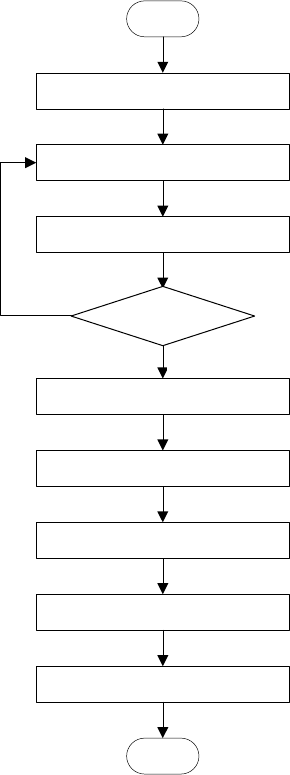
4
4.0 INDUSTRIAL TRAINING PROCESS
The process flow for Industrial Training is given in the following flowchart:
Start
Plan for Placement
Apply for Placement
Receive Result
Agree?
Prepare for Industrial Training
Undergo Industrial Training
Monitoring Visit
Prepare marks/grade
Prepare report
End
Yes
No
4.1 INITIAL PREPARATIONS
• The Industrial Training briefing should be held not later than the 10
th
week of the semester.
• Qualified students are required to shortlist three (3)
companies/organizaitons from the Industrial Training Unit’s
database as candidates for their placement.
• Each student must provide his/her resume to the Industrial Training
Unit.
• Each student must provide a certified copy of his/her academic
transciprt to the Industrial Training Unit, showing that required
prerequisite course(s) have already been fulfilled.
Accepted?

5
4.2 FINAL PREPARATIONS
• Application for industrial training placement (i.e. sending out cover
letters and resumes of all students to companies/organizaitons) will
be handled by the Industrial Training Unit.
• Applications will be done via email where carbon copies are also
sent to the (i) student, and (ii) head of the Industrial Training Unit.
o Once students obtain acceptance into a
company/organization, he/she must immediately inform the
Industrial Training Unit. Upon acceptance, the
company/organization will send the acceptance notification
form to the Industrial Training Unit.
o If there is no reply from the company/organization after 2-
weeks, the student must notify the Industrial Training Unit
where an application will be sent to the next candidate
company/organization. Note that the same action must be
taken until all three companies/organizations have been
exhausted.
o If all three companies/organizations do not respond, the
Industrial Training Unit will then work together with the
student so that a placement is ultimately found.
• The final briefing for Industrial Training should be held not later than
the 15
th
week of the semester.
• Students must collect the Industrial Training Kit two weeks prior to
the commencement of the Industrial Training.
• Qualified students must register for the Industrial Training course
through UPM’s eSMP (http://esmp.upm.edu.my) once the semester
commences.
• In special cases, a student is allowed to begin their Industrial
Training earlier than scheduled, provided he/she has finished all
final examinations of the previous semester.
4.3 INDUSTRIAL TRAINING IMPLEMENTATION
• Students must submit monthly progress reports via the Industrial
Training System (LI System) at https://lifsktm.upm.edu.my, starting
from the second month until the fifth month of their training.
• Students must submit their logbook, final report and other relevant
documents to the Industrial Training Unit on the Industrial Training
Day (LI Day), whose date will be duly announced.
• Upon receipt of all necessary documentats, the Industrial Training
grades will be keyed into the eSMP by the respective department
coordinator.

6
5.0 GENERAL RULES
• It is mandatory for every registered student to undergo the full mandatory
training period of 24-weeks.
o In the event of a student taking leave, he/she is required to replace
the number of days equal to the number of days he/she has taken
leave. This also includes medical leaves.
• Students are required to maintain discipline and enthusiasm as well as
refrain from misconduct in order to maintain the good name of the faculty
and most important, university.
o Students will be penalized if they do not comply with university rules
and if they do not complete the training satisfactorily.
• Students are responsible for all expenses including (but not limited to) cost
of living, accommodation and transportation throughout the training period.
6.0 ROLES AND RESPONSIBILITIES
6.1 ROLE OF STUDENT
• Attend all briefing sessions organized by the Industrial Training Unit,
FSKTM, UPM.
• Collect the following items after the final briefing:
i. Certificate of Insurance Coverage (issued by the Division of Student
Affairs - BHEP)
ii. Letter of Indemnity (if required)
iii. Non-disclosure agreement - NDA (if required)
iv. Industrial Training Placement Verification Form - Student Personal
Information
v. Log Book
vi. Industrial Training Handbook (please download from
https://lifsktm.upm.edu.my)
vii. Industrial Training Report for Duty Confirmation Form
viii. Copy of Placement Acceptance Letter/Form by Industry
• Frequently access the LI System for reporting purposes during the training,
as well as for reference regarding the Industrial Training course.
• Ensure all correspondence with the company/organization be made
through the Industrial Training Unit.
• Complete and submit all relevant forms and documents before the training
commences.
• Report for duty at the company/organization based on the appointed date
an time.
• Bring along any relevant documents upon reporting for duty.
• Return via email ([email protected]) the Report for Duty
Confirmation form within one week of reporting for duty.

7
• Comply with the Universities and University Colleges Act (AUKU)
during the training period.
• Comply with the company/organization rules and regulations.
• Foster good relations and give high commitment to the
company/organization.
• Fill in the Log Book and prepare monthly progress reports.
• Inform the company/organization and/or the Industrial Training Unit in case
of any problems encountered during the training period.
• Must not withdraw from the Industrial Training without prior notice to the
Industrial Training Unit (while providing strong justification).
• Prepare presentation slides for evaluation by visiting lecturer during the
final visit.
• Upon training completion, return the following to the Industrial Training
Unit:
i. Performance Evaluation by Industry Supervisor Form
ii. Organization Evaluation by Student Form
iii. Log Book
iv. Student Industrial Training Final Report
6.2 ROLE OF VISITING LECTURER
• Ensure proper implementation of the Industrial Training procedures by the
student.
• Attempt to establish bilateral relations with the companies/organizations
during the initial and/or final visits.
• Monitor and perform the following evaluations/assesments (in the LI
System at https://lifsktm.upm.edu.my), within the stipulated period:
i. Initial Monitoring – between the second and fourth week the training
period.
ii. Monthly progress monitoring – from the second until fifth month of the
training period.
iii. Final Monitoring – within the twenty-second and twenty-fourth week of
the training period.
• Submit hardcopies of the following completed forms to the respective
department Industrial Training coordinator for approval:
i. Summary
ii. Visiting lecturer’s report
• Submit the students’ Industrial Training Logbooks and Final Reports to the
Industrial Training Unit (@ Administration Office, Block A, FSKTM)

8
6.3 ROLE OF INDUSTRIAL TRAINING AND CAREER UNIT
• Appoint department level Industrial Training Coordinators.
• Conduct initial briefing to potential visiting lecturers and students, not later
than the 10
th
week of the semester.
• Ensure suitability and validity of companies/organization in the Industrial
Training company/organization database.
• Ensure all registered student obtains Industrial Training placement.
• Select and appoint visiting lecturers to respective companies/organizations.
• Perform necessary follow up actions with regards to Industrial Training
activities in the case that any of the activities are at the detriment of the
country, university, faculty, department and/or students.
6.4 ROLE OF INDUSTRIAL TRAINING COMPANY/ORGANIZATION
• Provide training relevant to the scope and schedule of Computer
Science/Information and Communication Technology students.
• Provide briefing and information with regards to the rules and regulations of
the company/organization that the students must adhere to.
• Appoint at least one qualified Industrial Training Supervisor for the student.
• Submit reports using the forms provided in the LI System (accessed via
https://lifsktm.upm.edu.my using the username and password provided by
the visiting lecturer during the final visit).
• Inform the Industrial Training Unit if the student is involved in activities
deemed unworthy that can tarnish the company’s/organization’s,
university’s and/or country’s good name and reputation.
7.0 EVALUATION
The performance evaluation for students undergoing Industrial Training must
be in accordance with the following criteria (refer to the evaluation rubrics in
Appendix A1 and A3):
7.1 Evaluation by the Visiting Lecturer (20%)
7.1.1 Visiting Lecturer’s Report (10%)
Evaluation criteria: Student’s communication skills and
progress presentation during the final visit.
7.1.2 Log Book (5%)

9
Evaluation criteria: Student’s ability to record details with
regards to tasks, activities and deliverables in the Log Book.
7.1.3 Attendance (5%)
Evaluation criteria: Attendance percentage that is reported by
the Industrial Training Supervisor.
The Daily Attendance (can be download from the LI System @
https://lifsktm.upm.edu.my) must be attached on the second
page of the Log Book.
7.2 Industrial Supervisor Report (40%)
Assessment by the Industrial Supervisor will be based on the following
skills: (i) cognitive, (ii) critical thinking, (iii) problem solving, (iv)
psychomotor, (v) affective, (vi) ethics and moralily, (vii) leadership and
communication.
7.3 Student Industrial Training Final Report (40%)
Students’ reports will be assessed by the visiting lecturer based on the
following skills: (i) cognitive, (ii) critical thinking, (iii) problem solving,
and (iv) psychomotor.
8.0 STUDENT’S FINAL REPORT
The report must contain the following items:
8.1 Content
• The Introduction section should include:
I. The objectives of the Industrial Training course; and
II. A brief summary of what has been done and achieved during
the training period.
• Company/Organization background.
I. The company’s/organizaiton’s profile, mission and vision; and
II. The organizational chart, with relevant descriptions.
• Tasks performed/system developed/etc.
I. A detailed explanation of the tasks performed by month or by
stages; and

10
II. The processes, activities and outcomes for each task.
• Conclusions and recommendations.
I. Describe all lessons learnt, experiences, new knowledge and
skills acquired during the training; and
II. Summarize the Industrial Training program and provide
suggestions for future improvements.
8.2 The Report
• A4 paper size
• Printed and tape binded
• Arial 12pt, 1.5 spacing, justified.
• Contain a minimum of 10,000 words
• All pages must be numbered (center alignment)
• Language: English.
• Must attach the Approval Sheet on the first page of the report.
(Download from the LI System @ https://lifsktm.upm.edu.my).
9.0 ALLOWANCE
Remuneration or allowances for the students are subject to the
company/organization that offers placement for Industrial Training.
• It is worth noting that normally, government or government-linked
organizations do not provide allowances.
10.0 APPENDICES
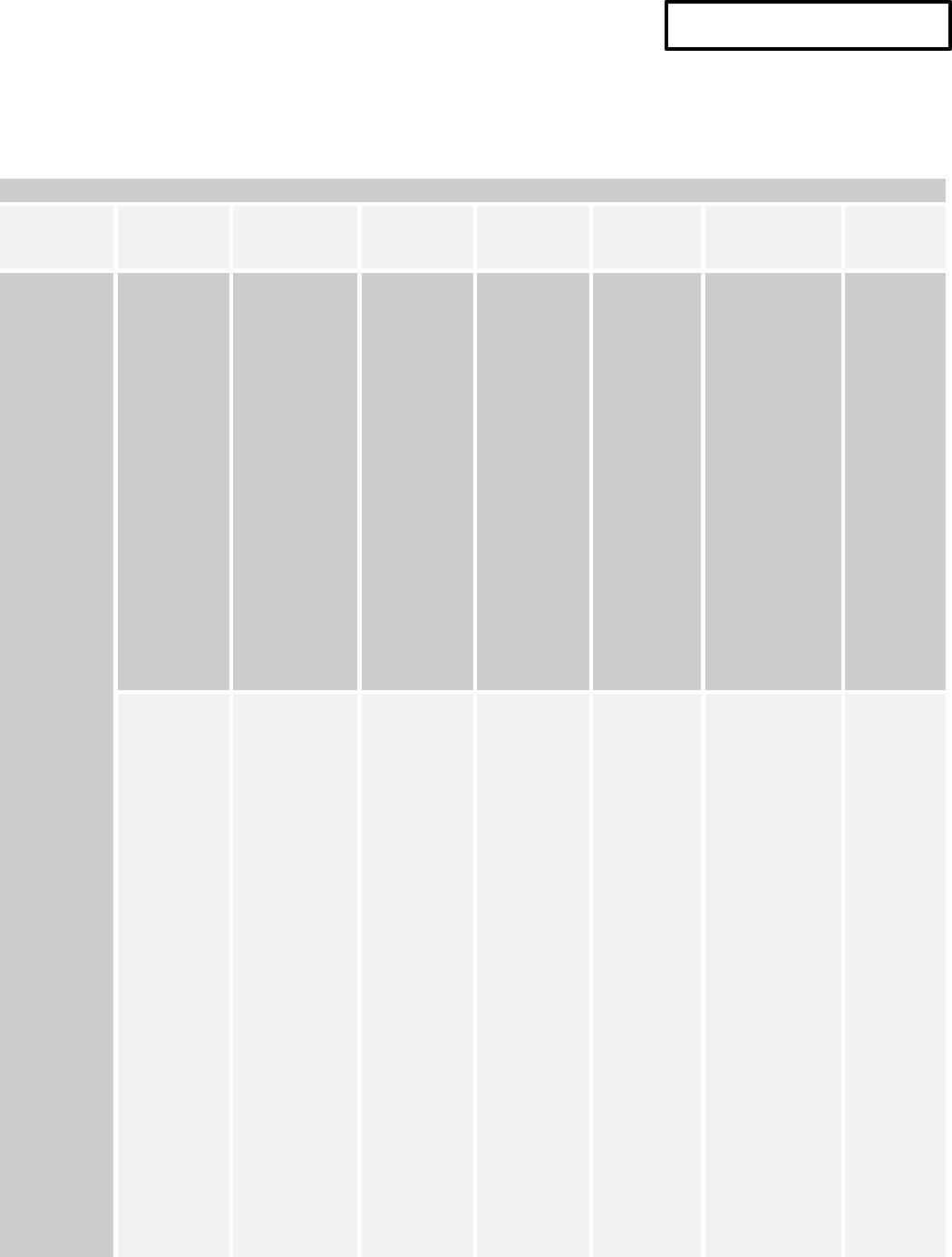
VISITING LECTURER RUBRIC
RUBRIC FOR ASSESSMENT OF STUDENT’S PERFORMANCE BY VISITING LECTURER - 10%
A
CRITERIA
VERY POOR
(1)
POOR
(2)
GOOD
(3)
VERY
GOOD
(4)
EXCELLENT
(5)
MARKS
( /5)
Communic
ation
(i)
Communic
ation skills :
oral,
communica
tion skill
Show very
poor
communicati
on skills.
Unable to
make some
associations
of the
content.
Show poor
communica
tion skills.
Able to
make some
association
s of the
content.
Show good
communica
tion skills.
Able to
make some
association
s, and
analysis of
the content.
Able to
integrate
good
reasoning
into the
work and
show good
communic
ation skills.
Able to
make
some
association
s, analysis
of the
content,
and
evaluation
of eventual
results.
Able to
integrate
critical
reasoning into
the work and
show effective
communicatio
n skills.
Able to make
associations,
analysis of the
content, and
evaluation of
eventual
results.
/5
(ii)
Online
monthly
progress
report (A4)
: quantity
and quality
(follows
dateline,
shows
commitmen
t, provide
an
acceptable
content of
report,
which
MUST AT
LEAST
consists of
a
summarizat
ion of the
student’s
work/trainin
g each
month)
Unable to
provide proof
of good
communicati
on with no
submission
at all
Able to
provide
proof of
communica
tion by at
least
submitting
detailed
one (1)
month
progress
report
Able to
provide
proof of
acceptable
communica
tion by at
least
submitting
detailed
two (2)
monthly
progress
report
Able to
provide
proof of
good
communic
ation by at
least
submitting
detailed
three (3)
monthly
progress
report
Able to
provide proof
of good
communicatio
n by
submitting
detailed four
(4) monthly
progress
report
/5
Appendix 1

2
ATTENDANCE RUBRIC – 5%
B
VERY POOR
(1)
POOR
(2)
GOOD
(3)
VERY
GOOD
(4)
EXCELLENT
(5)
MARKS
( /5)
Reflect
social
accountabili
ty
(i)
Attendan
ce during
Industrial
training
Student
attendance
is below 80%
Student
attendance
is within 80-
89%
Student
attendance
is above
90%
Student
attendance is
above 95%
Student
attendance is
100%
/5
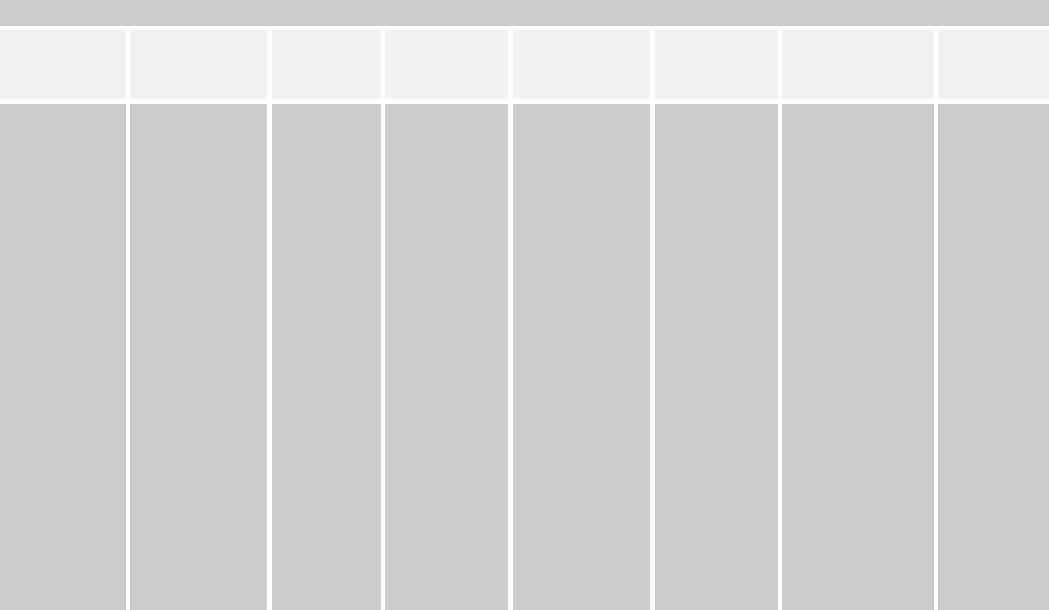
3
LOG BOOK RUBRIC – 5%
C
CRITERIA
VERY
POOR (1)
POOR
(2)
GOOD
(3)
VERY
GOOD
(4)
EXCELLENT
(5)
MARKS
(1-5)
Log Book
Log Book:
Shows an
evident of
attendance,
provides
complete log
book record;
expectation
includes
fulfilment of
task,
outcome,
and
supervisor’s
comments
Unable to
demonstr
ate a
sense of
professio
nalism
and work
ethic with
attendanc
e evident
of less
than 80
percent
without
acceptabl
e reason,
and
delivering
outcome
far from
expectatio
n
Able to
demonstrat
e only slight
professiona
lism and
work ethic
by
providing
an evident
of at least
80-89
percent
attendance,
and
delivering
outcome
below
expectation
Able to
demonstrate
a sense of
professionali
sm and work
ethic by
providing an
evident of at
least 90-94
percent
attendance,
and
delivering
outcome
near
expectation
Able to
demonstrat
e a strong
sense of
professiona
lism and
work ethic
by
providing
an evident
of at least
95-99
percent
attendance,
and
delivering
outcome as
expected
Able to
demonstrate a
strong sense
of
professionalis
m and work
ethic by
providing an
evident of 100
percent
attendance,
and delivering
outcome that
exceeds
expectation
/5
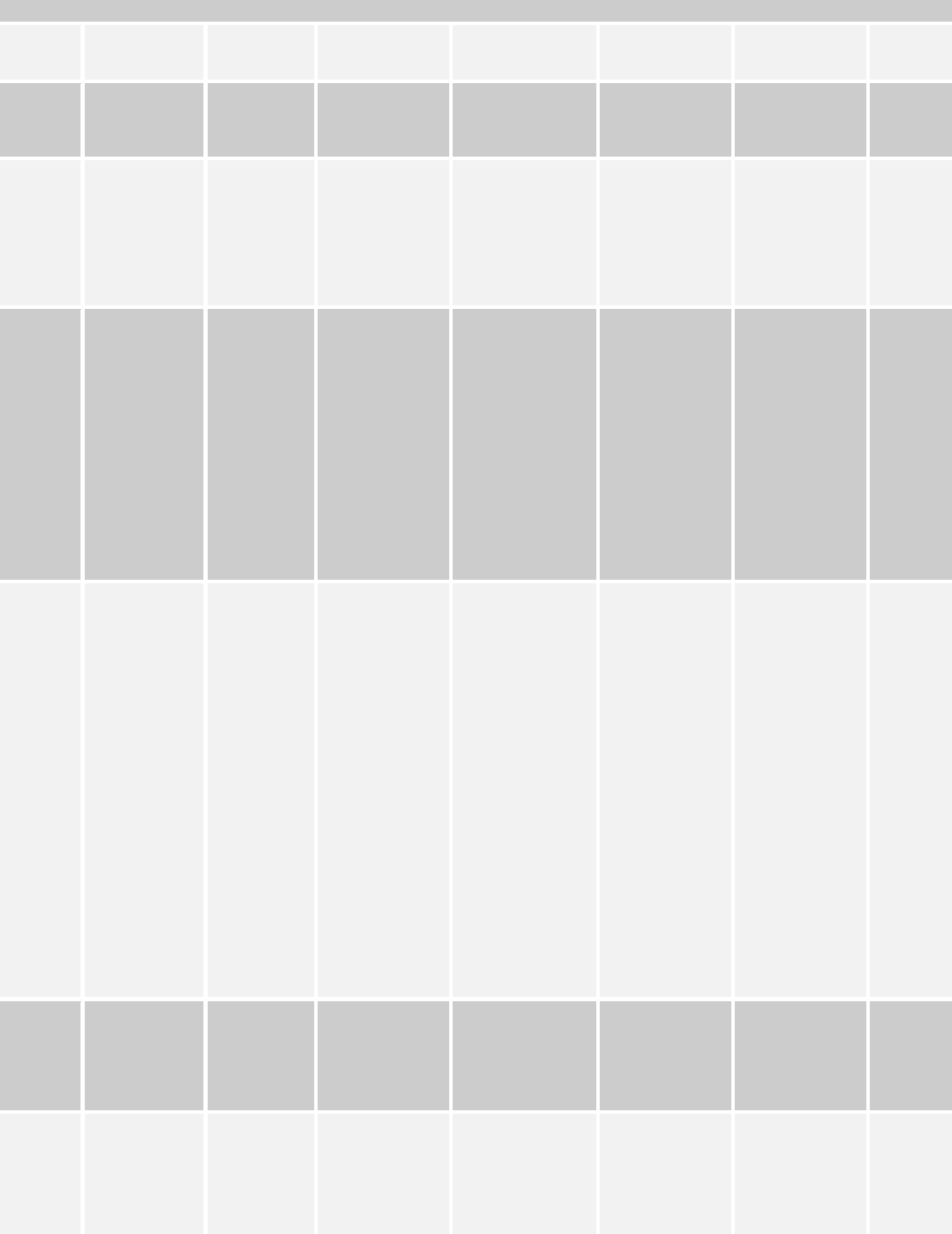
STUDENT REPORT RUBRIC – 40%
D
CRITERIA
VERY
POOR
(1)
POOR
(2)
GOOD
(3)
VERY
GOOD
(4)
EXCELLENT (5)
MARKS
/5
Report
Evaluati
on
(i)
Introduction (LI
Objective)
Not clearly
written
Written too
short
Partly Written
Well written
Clearly written
/5
(ii)
Organization
Background
(Company
Profile,
Organizational
Chart with
description)
Not clearly
written
Written too
short
Partly Written
Well written
Clearly written
/5
(iii)
Task
performed
I. explain in
detail the task
performed by
month or by
stages
II. For each
task
performed,
provide the
processes
activities and
outcomes
Not clearly
written
Written too
short
Partly Written
Well written
Clearly written
/5
(iv)
Conclusion
and
Recommendat
ion
I. Describe all
lesson learnt,
experiences,
new
knowledge
and skill
acquired
during
industrial
training
II. Summarize
the industrial
training
program and
include
suggestion for
improvement
Not clearly
written
Written too
short
Partly Written
Well written
Clearly written
/5
(v)
Report Format
(Fully binded,
report
organization)
Not
according
to the
format and
content
Does not meet
the required
format and
content
Partially follow
the required
format and
content
Follow the
required
format and
content
Completely
follow the
required
format and
content
/5
(vi)
Use of
language.
Does not
meet the
academic
writing
standard
There are
many
language
mistakes;
diffculties in
understanding
Most of the
words used are
unclear,
incorrect and
unsuitable which
have an effect
Most of the
words used
are clear,
correct and
suitable except
for few
Uses of words
are clear,
correct and
suitable
represents an
excellent level
/5
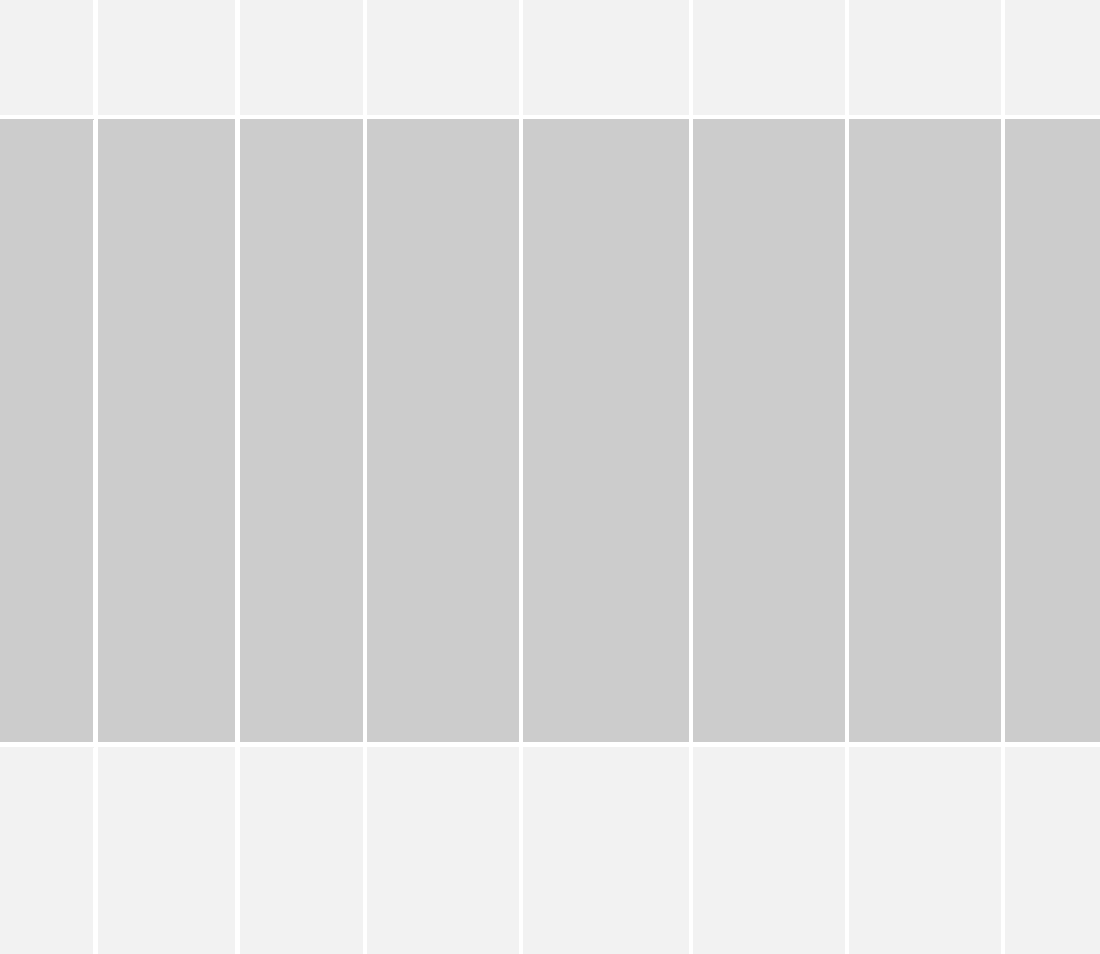
the report
on the
effectiveness of
the report
unsuitable
words but
does not
impair the
report
(vii)
Complete :
report content
requirement
(i) Introduction
(LI Objective)
(ii)
Organization
Background
(Company
Profile,
Organizational
Chart with
description)
(iii) Task
performed
(Process,
Activities and
Outcome)
(iv) Conclusion
and
Recommendat
ion (Lesson
learnt,
experience,
new
knowledge
and skill
acquired,
suggestion)
Does not
meet the
requiremen
t set
Too much
important
requirement
are left out
Only few
important
requirement are
left out but is still
not complete
All required
important
requirement
are included,
but some
irrelevant
information are
also included
All required
important
requirement
are included
/5
Commu
nicate
Effectiv
ely
Quality of
report Content
- the content
must be
consistent and
relevant
Content are
inconsistent
and
irrelevant
Uncomprhensi
ble and written
in an informal
nature
Effective
communication
written in
consistent
formal nature
Clear,
organized, and
at a level
appropriate for
intended
readers/audien
ce
Clear,
comprehensibl
e, organized,
succinct and at
a level
appropriate for
intended
readers/audien
ce
/5
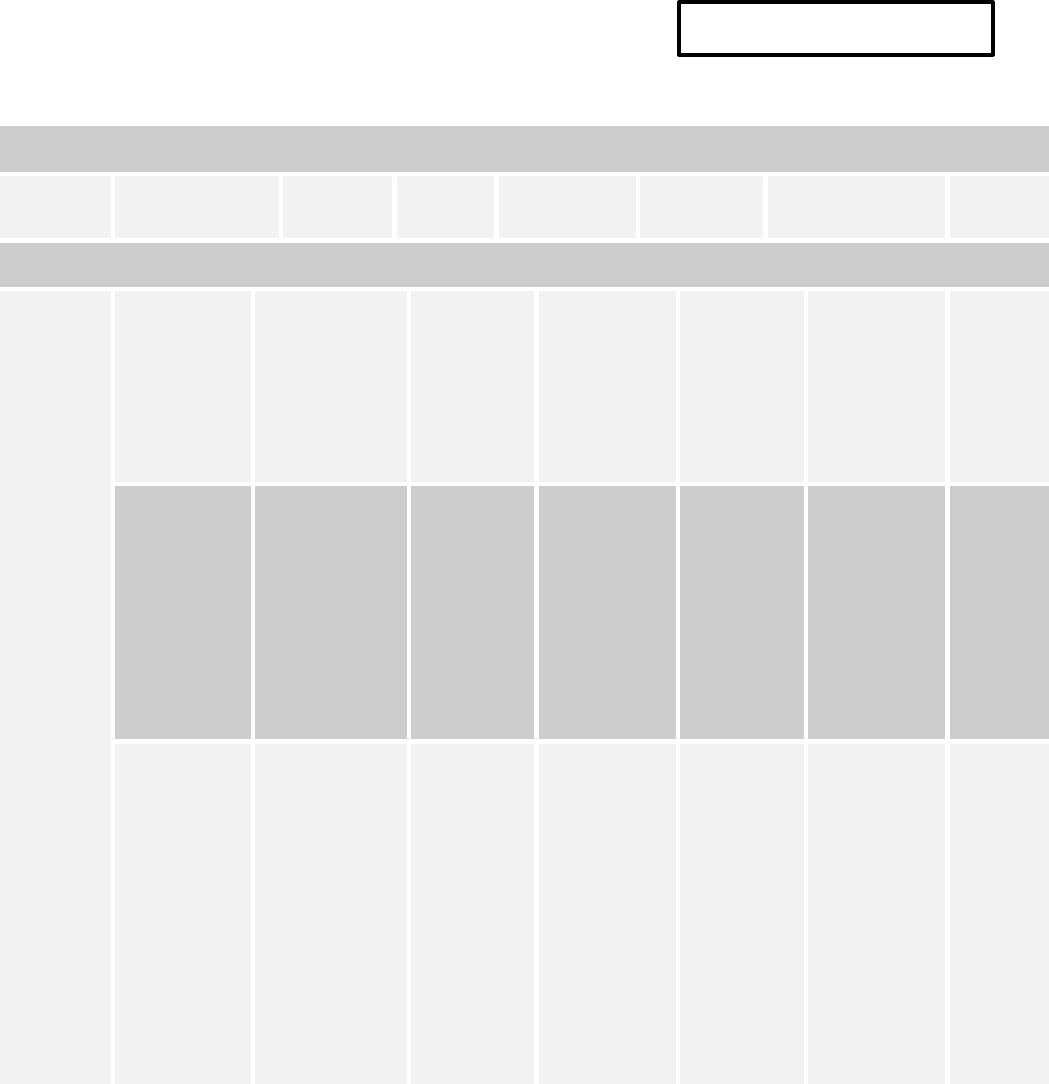
INDUSTRIAL SUPERVISOR RUBRIC
RUBRIC FOR ASSESSMENT OF STUDENT’S PERFORMANCE BY INDUSTRIAL SUPERVISOR (40%)
CRITERIA
VERY
POOR
(1)
POOR
(2)
GOOD
(3)
VERY
GOOD
(4)
EXCELLENT
(5)
MARKS
( /5)
A. SKILLS
Scientific
thinking
skill (CTPS
CPS4,
CPS8)
Technical
and
practical
skills
(CPS9)
Student is
able to
propose a
solution for a
given problem
Unable to
propose a
solution within
a given time
Able to
provide
solution
with
guidance
within a
given time
Able to
provide
solution with
minimal
guidance
within a
given time
Able to
provide
solution
independen
tly within a
given time
Able to
provide
solution
independentl
y &
effectively
within a
given time
/ 5
Student is
able to show
problem
solving skill
in performing
a task given
Unable to
solve problem
Problems
are solved
but only
partials of
the
requiremen
ts are met
Problems are
completely
solved
according to
requierement
s but still
have minor
errors that
does not
affect the
outcome
Completely
solved
problems
and meet
all
requiremen
ts
Completely
solved
problems
and meet all
requirements
with value
added
propose
solution
/ 5
Student is
able to apply
any of the
following
computing
skills: analyze,
model, design,
develop, code
and evaluate
computerizatio
n solution
Unable to
apply any of
the stated
skills.
Able to
apply any
(1) of the
stated skills
with limited
capacity.
Able to apply
any (1) of the
stated skills.
Able to
apply any
(2) of the
stated
skills.
Able to apply
more than (2)
of the stated
skills.
/ 5
Appendix 2
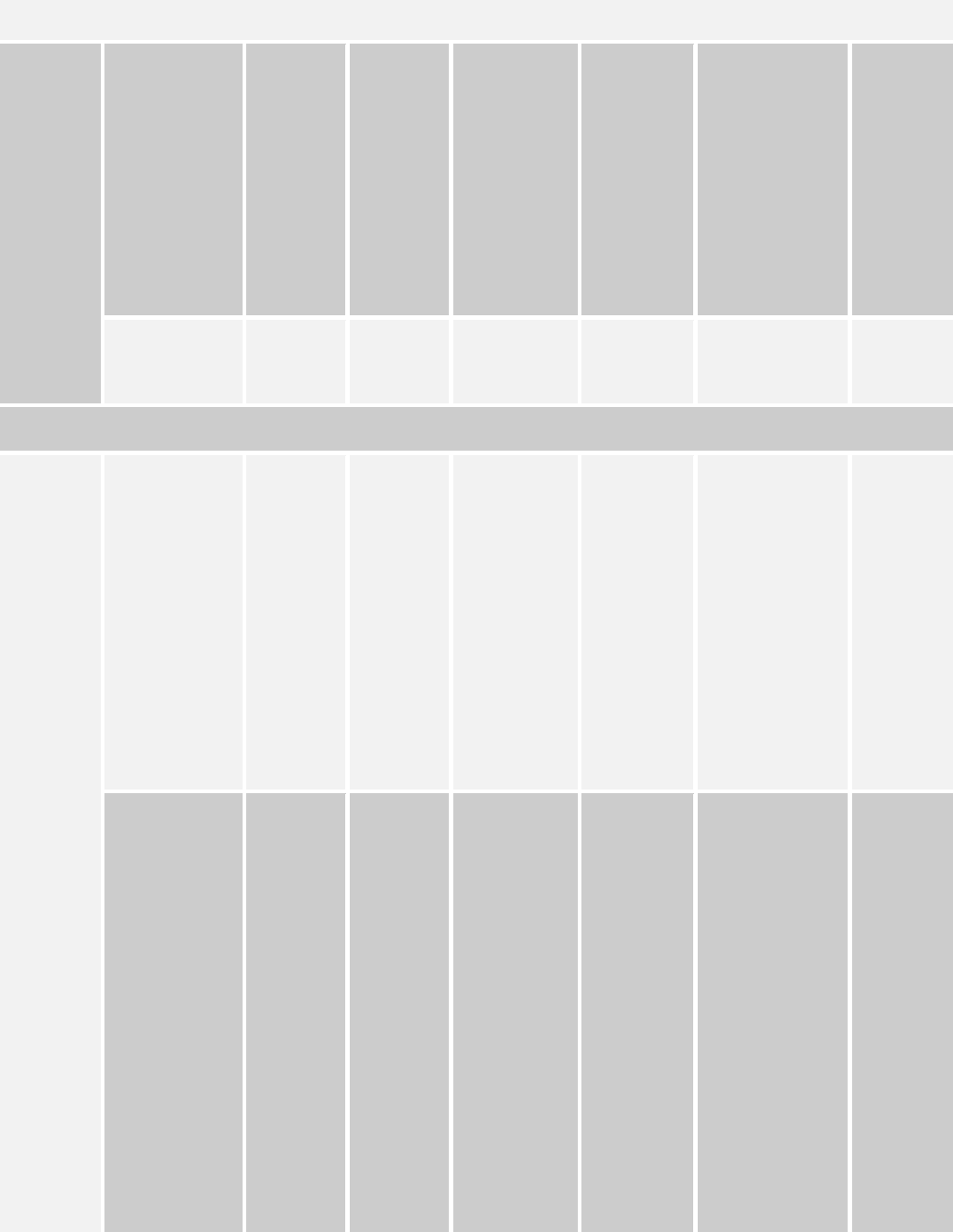
B. PROBLEM SOLVING AND COMMUNICATION
Communi
cation
(i)
Responsiveness
(student's ability
to communicate
and interact with
supervisor and
peers in
workplace)
Reluctant
to ask
questions,
becomes
uneasy
when
asked
questions
Asks
some
questions
to aid
understan
ding and
learning,
may
become
uneasy
when
asked
questions
Asks
questions
relevant to
understandin
g and
learning,
demonstrate
s poise when
answering
questions,
but hesitates
before doing
so
Ask
insighful
questions
to help
understandi
ng and
learning,
demontrate
s poise
when
answering
questions
Ask challenging
questions to
help
understanding
and learning,
demontrates
poise and
confidence
when answering
questions
/5
(ii) Listening
Is easily
distracted
Pays
attention
to
speaker
Demonstrate
s a listening
attitude
Indicates
signs of
active
listening
Actively listening
with interest
/ 5
C. TEAMWORK
(i)
Effort and
participation
Consisten
tly
inactive in
activities
during the
session
No effort
made to
assign
roles to
group
members
Sometime
s
participat
e in
activities
during the
session
Student
assigned
roles but
roles not
consistent
ly
adhered
to
Always
participate in
activities
during the
session
Students
assigned a
role but roles
not clearly
defined
Actively
participate
in activities
during the
session
Student
assigned a
clearly
defined
role; group
members
perform
roles
effectively
Proactively
participate in
activities during
the session
Enthusiatically
participate as a
team member
Commited to the
roles assigned
/ 5
(ii)
Responsibility
Does not
perform
assigned
tasks;
often
misses
meetings
and,
when
present,
does not
have
anything
constructi
ve to say;
relies on
others to
do the
work
Perform
assigned
tasks but
needs
many
reminder;
attend
meetings
regularly
but
generally
does not
say
anything
constructi
ve;
sometime
s expect
others to
do the
work
Perform all
assigned
tasks; attend
meetings
regularly and
usually
participate
effectively,
generally
reliable
Perform all
assigned
tasks
effectively;
attend
meetings
regularly
and usually
participate
effectively,
reliable
Perform all
assigned tasks
effectively;
attend all
meetings and
proactive
participation,
very reliable
/ 5
